Project FeederWatch is a great way to introduce children and adults to science and conservation through bird watching.
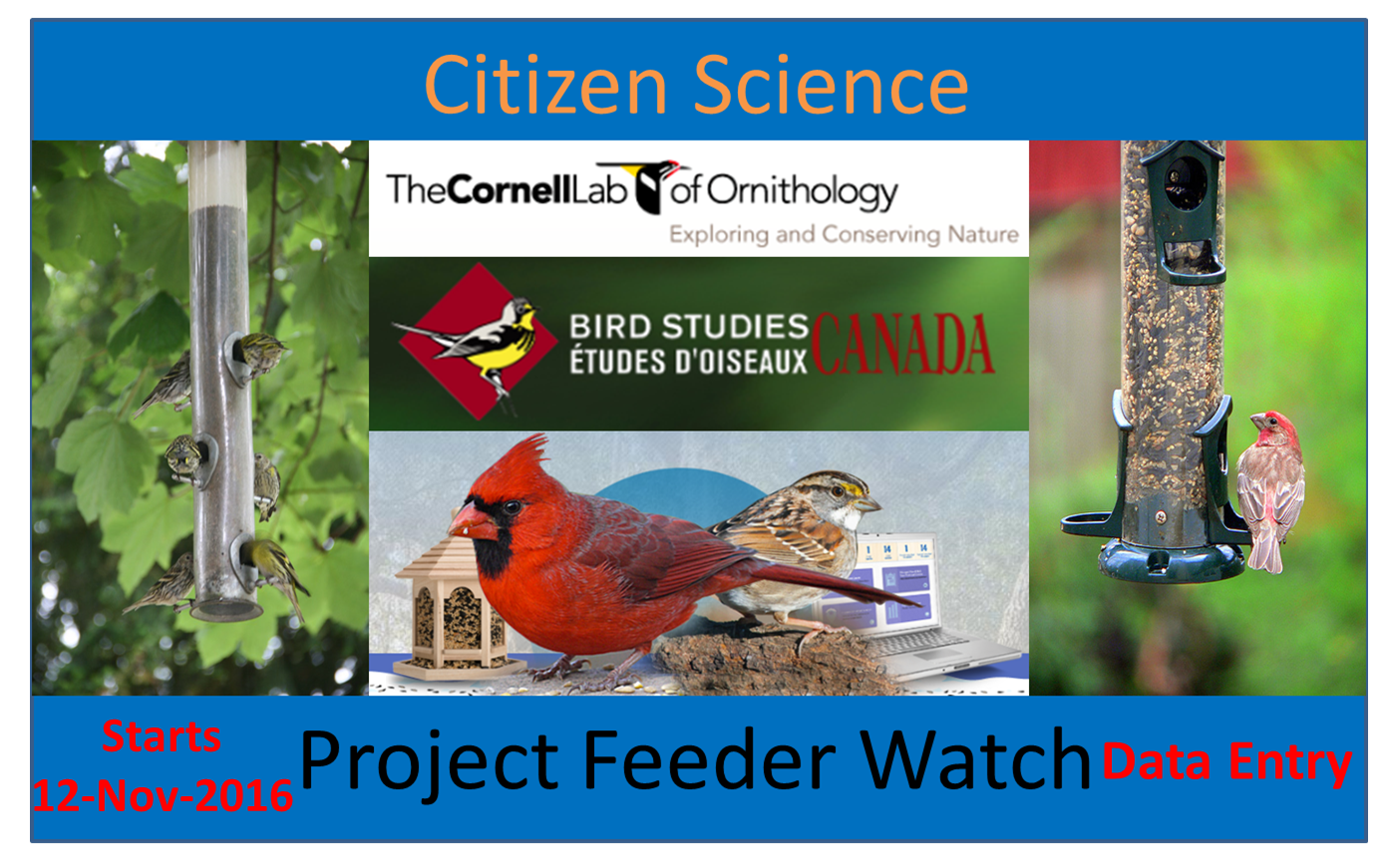
The 30th season of Project FeederWatch kicks off today, 12 November 2016.
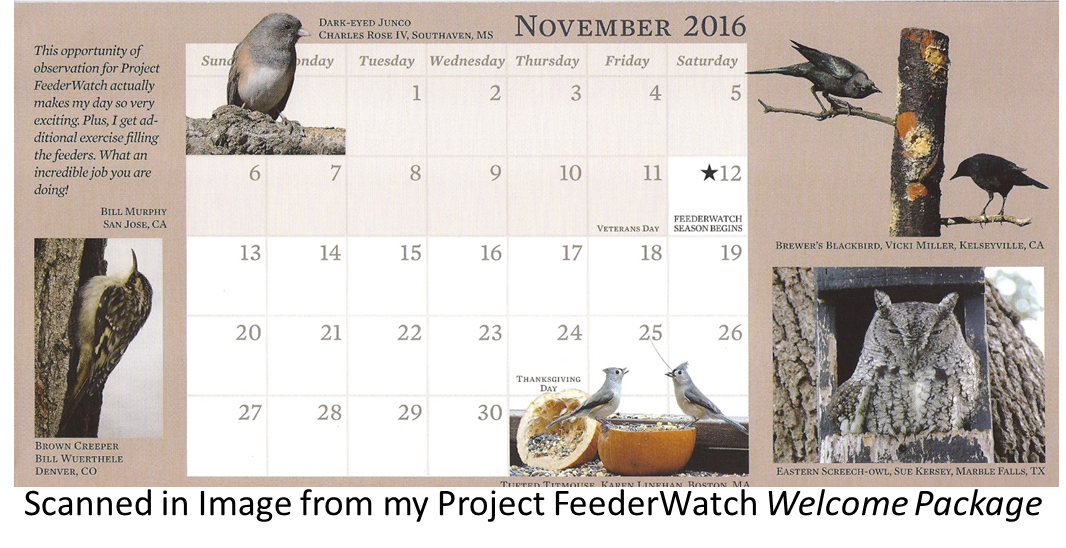
The 2016-2017 season goes through 7 April 2017.
Data Entry
This past Friday I entered a description of my feeder site for this season. The first step is to locate your feeder site using the Google Earth interface.
The first two questions describe the size of your bird watching area and the type of area it is.
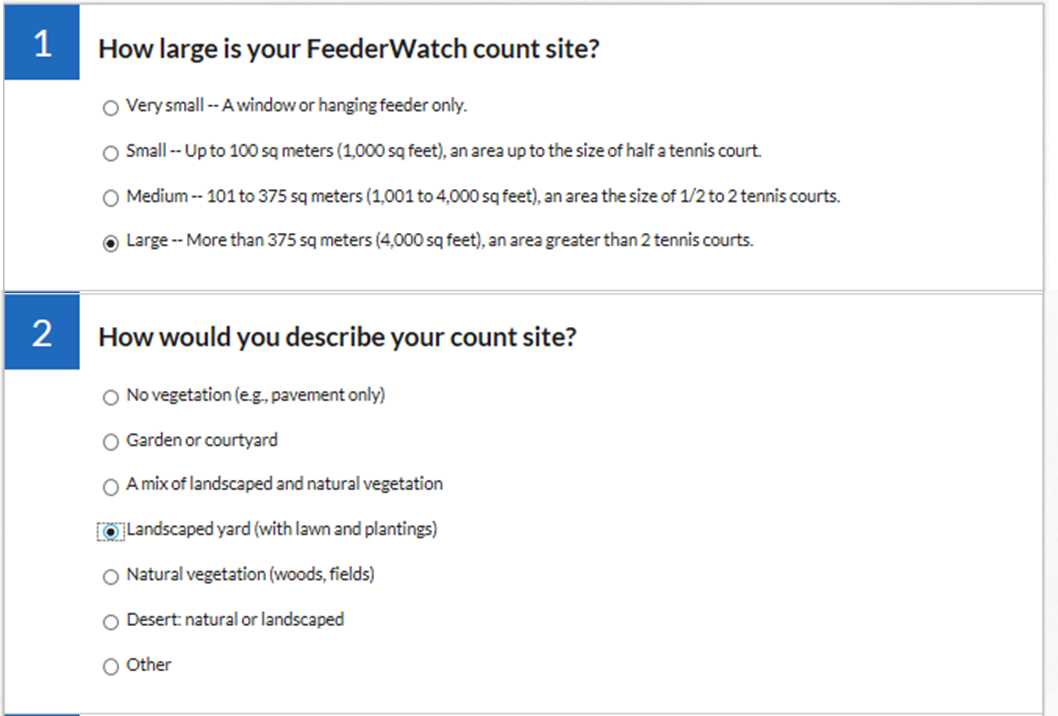
The next question describes the type of foliage in the area.
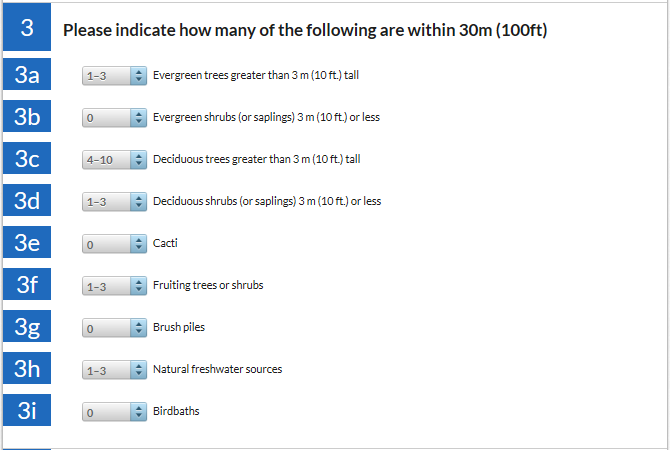
The next question asks you to describes the habitats in the area.
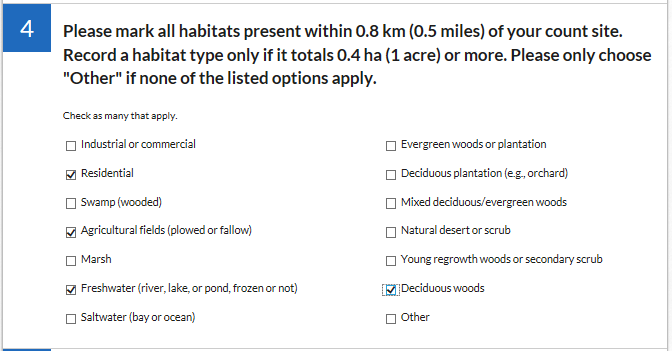
From Google Earth you can find the site elevation.
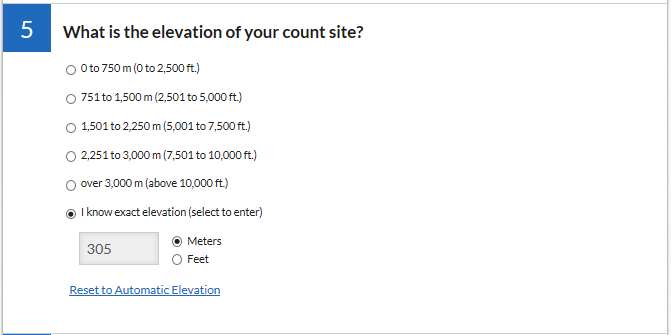
The next two questions describe the surrounding environment.

In the next question you describe the feeders you have put out for the birds. I have tube feeders filled with black oil Sun Flower seeds, peanuts, and coarse Sun Flower seeds. And another feeder in the shape of a sphere full of black oil Sun Flower seeds. I may put out a fourth tube feeder with nyjer for the Gold Finches.

Project FeederWatch members are encouraged to feed the birds year-round. This can be very expensive. But I have been able to maintain my feeders year-round. Because I maintain the feeders year-round, my feeders are well known by the wildlife in the area, namely squirrels.
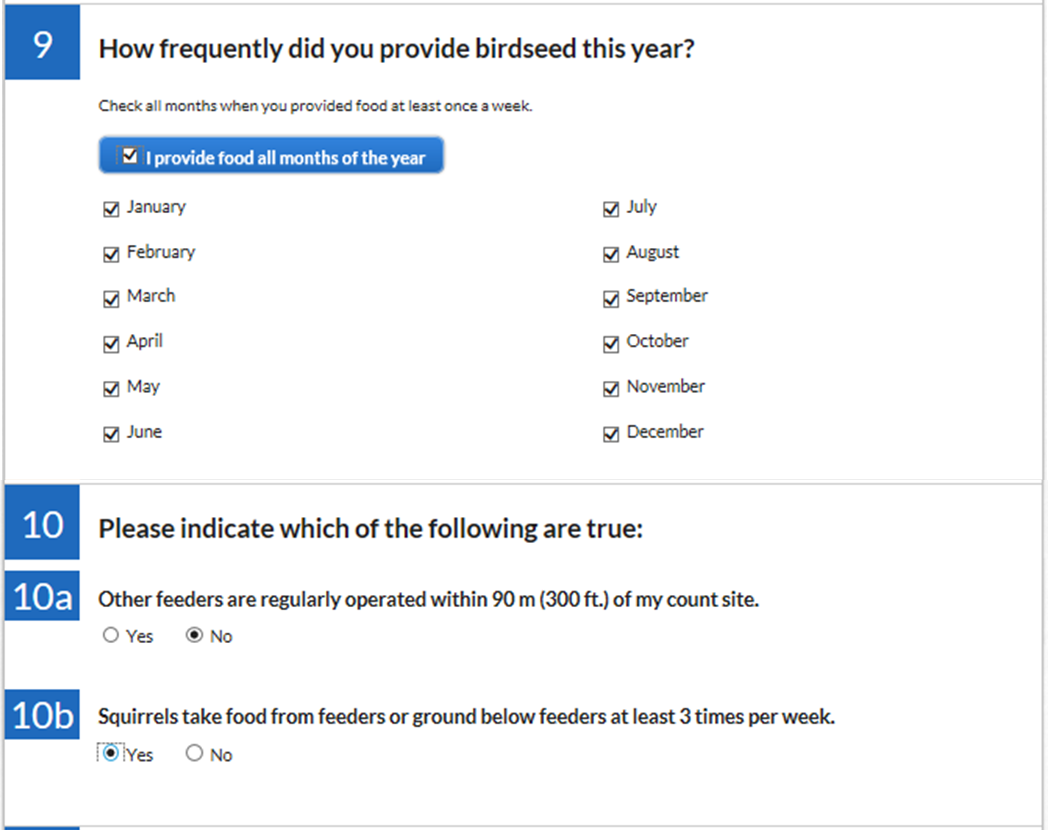
The final question asks you to describe whether cats, dogs, and humans are active in the area.
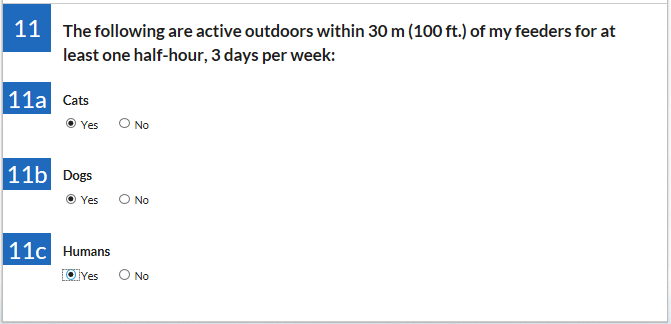
Bird Watching
Now that my feeder site is described and in the Project FeederWatch database its time to start bird watching. My next update will be my bird observations from this weekend.
Signing Up for the 2016-2017 Season
If you are interested in joining Project FeederWatch this season, you can learn more and sign-up at the Project FeederWatch website. During the 21 week season you will need to record your observations during two consecutive days each week.
Previous Post
Citizen Science: Project FeederWatch

